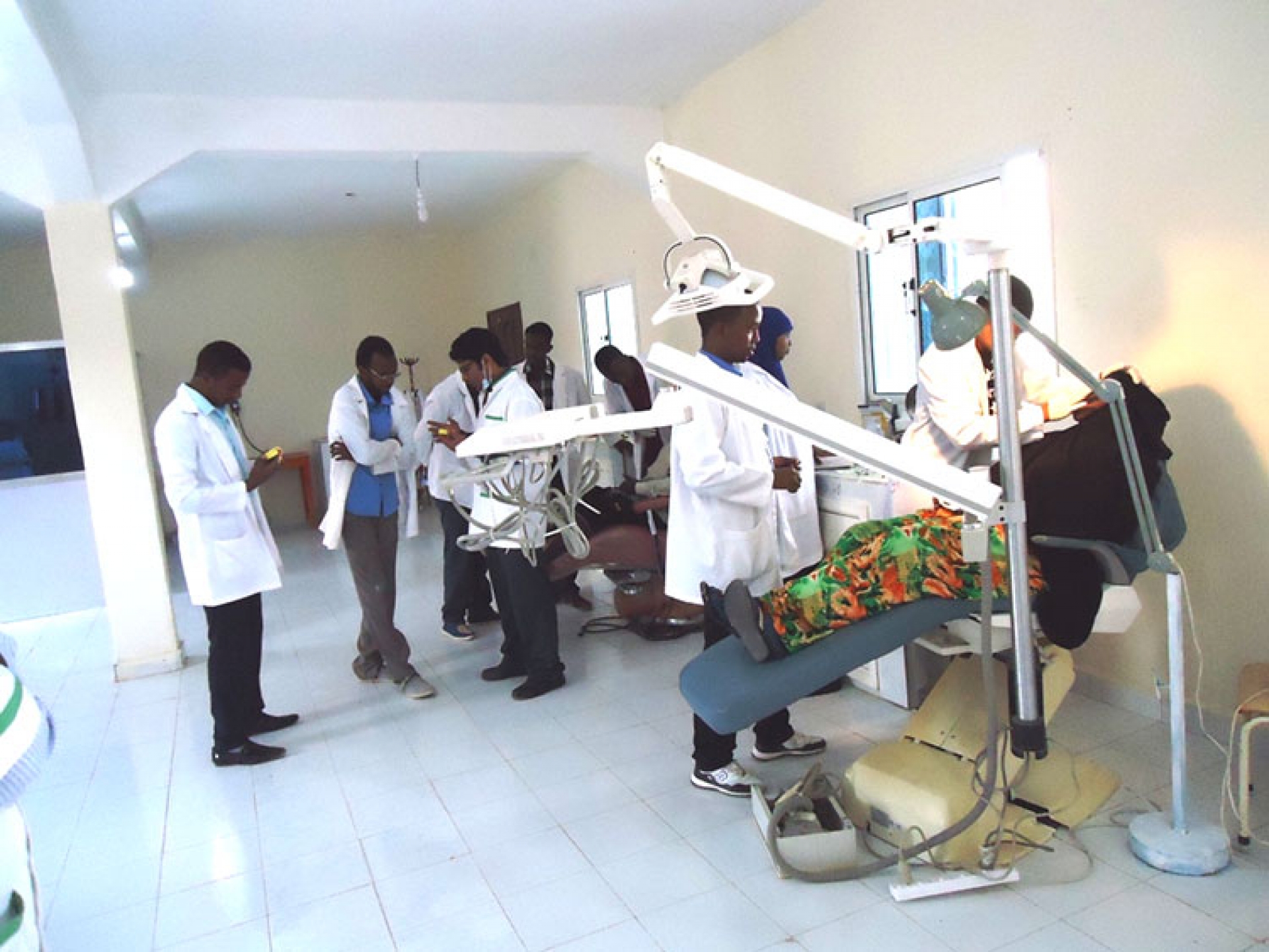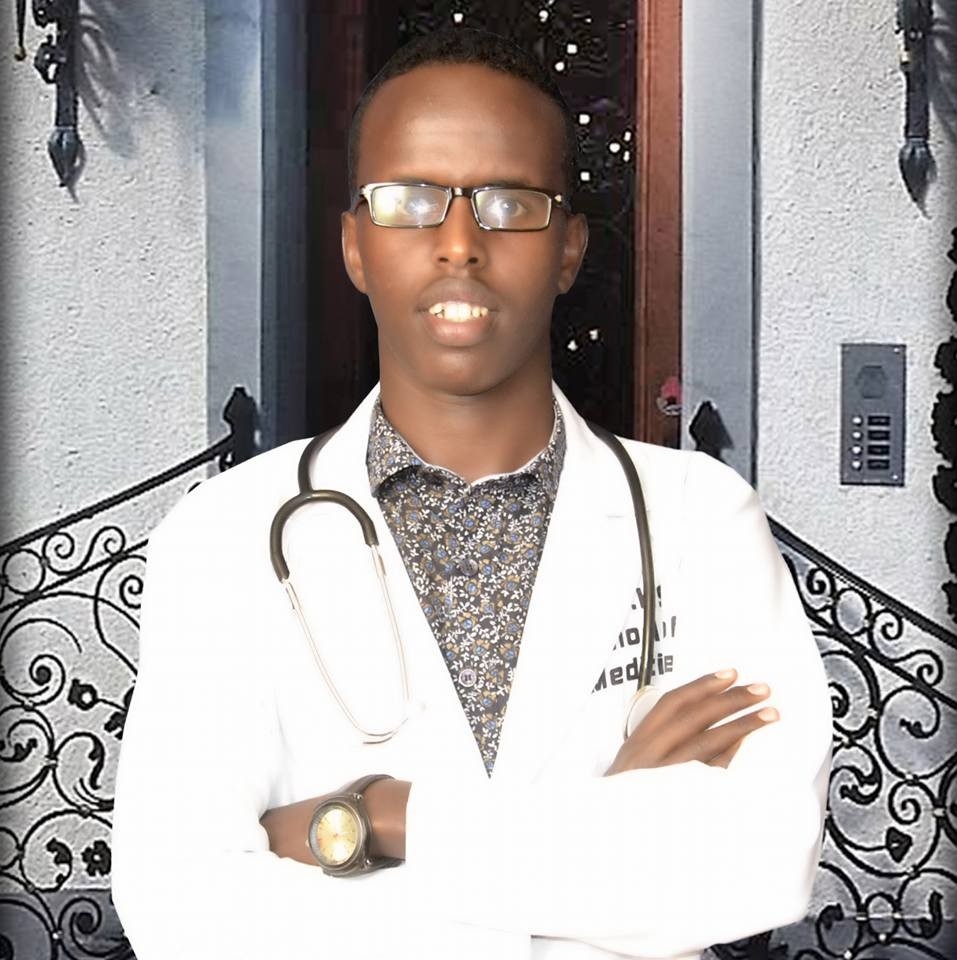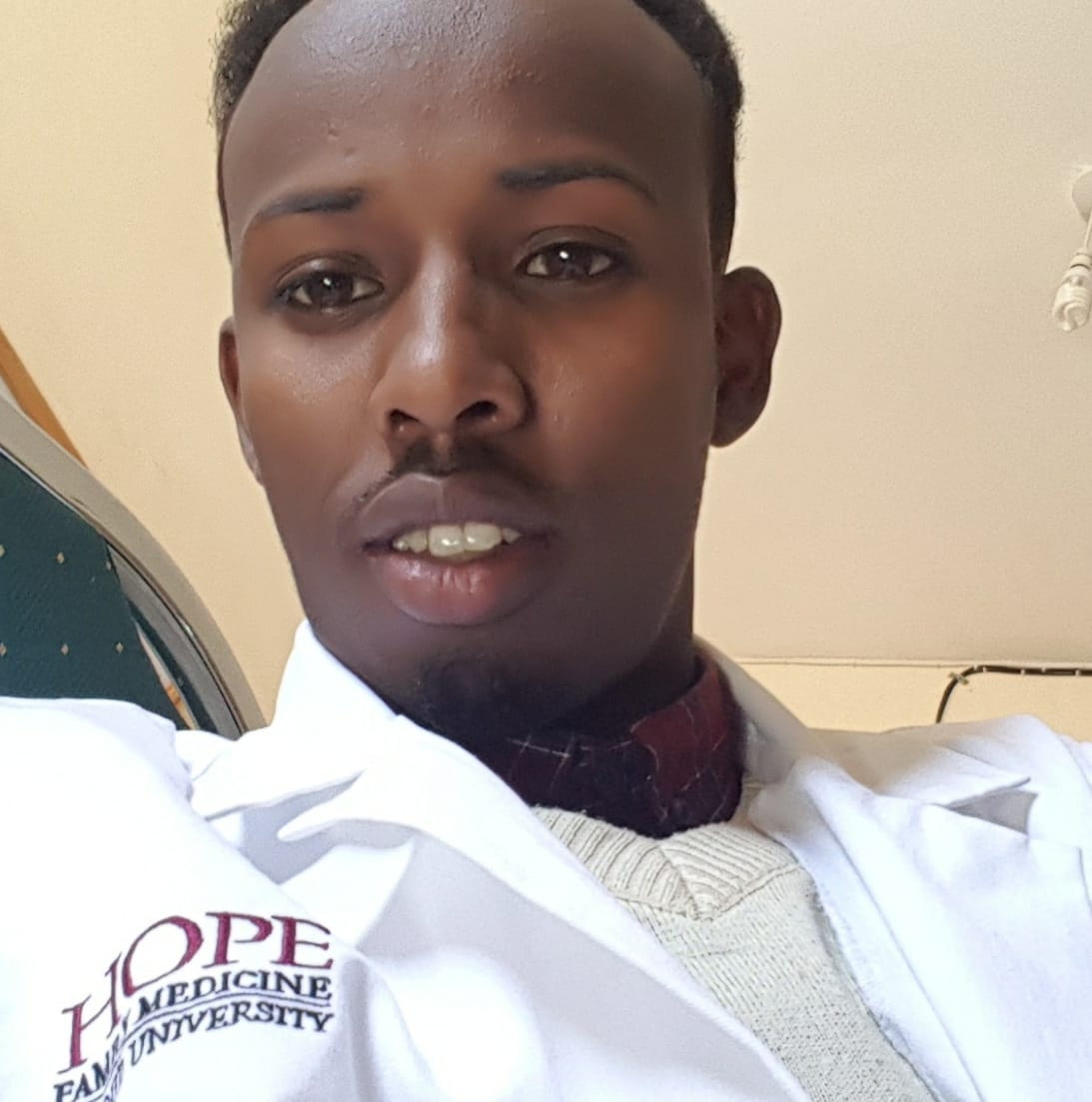It is composed now of six faculties with degree programmes and three diploma programs (Dental technicians, midwifery and radiology).
Following this policy of making priorities we started with the School of Medicine in the academic year 2000-2001 followed by the School of Nursing in the academic year 2006-2007. In the academic year of 2009-2010 the School of Dentistry was established and in the academic year of 2010-2011, the School of Pharmacy & School of Lab technology has been established. In the academic year 2011-2012 the Community Midwifery program began and in the academic year of 2012-2013 the School of Public Health and diploma in Radiology were also established .Six Schools are now operational with a total number of 753 students.
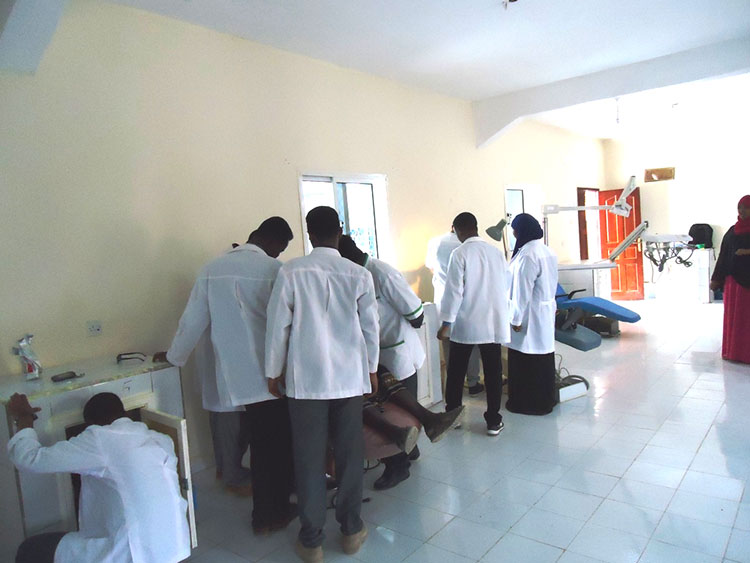
Goal of Amoud College of Health Sciences
The goal of Amoud Health Sciences is to produce competent health professionals who can deal with the prevailing health problems of the country, competent to practice preventive, promotive, curative and rehabilitative medicine in respect to the commonly encountered health problems and possess the attitude for continued self learning and to seek further expertise to pursue research in any chosen area of medicine, Nursing, Dentistry, Pharmacy and Lab Technology.
Vision
The vision of Amoud Health Sciences is to be an excellent school of Medicine, Nursing, Dentistry, Lab Technology, Pharmacy and Public Health with a holistic approach to health care, research and training.
Mission
The mission of Amoud Health Sciences is to contribute to knowledge and produce graduates with practical and intellectual skills appropriate to the needs of present and future Somaliland/Somali communities. The institute strives for ensure that the students acquire such skills using modalities that encourage active learning in the context in which they will later function as health professionals.
Philosophy of Amoud College of Health Sciences
The philosophy of Amoud Health Sciences entails training a health professional in the context of the community, in which he/she will later practice. It encourages the student to acquire the important skills of self-directed learning, problem–solving and effective communication. Moreover, the institute emphasizes not only curative, hospital-based medicine but also through its community oriented approach prevention of diseases and promotion of good health.
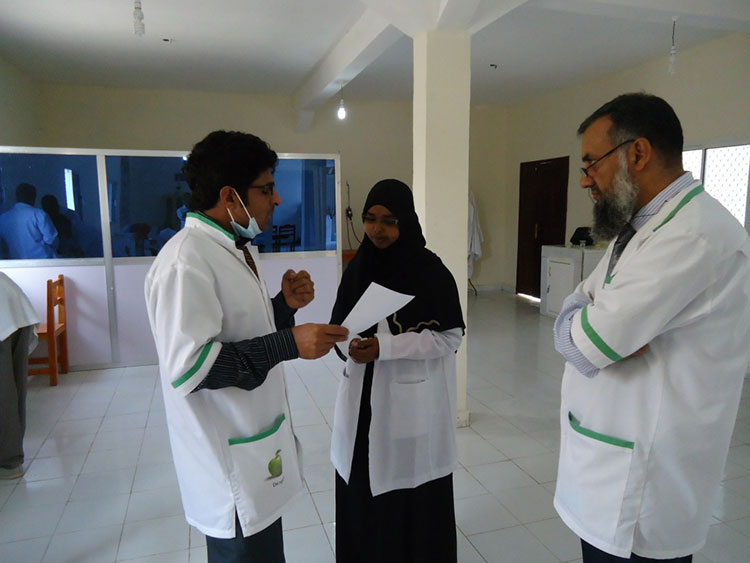
Curriculum and Educational Strategies
The curriculum of Amoud Health Sciences is community-oriented education with a learning experience for the students and services to the communities with the objective of giving the students the appropriate skills, attitudes and knowledge in identifying and dealing with the community health problems. The educational strategy is a student centered approach with emphasis on self learning to develop in the students the ability and willingness to pursue their own learning after graduation. The instructional strategies are lectures, seminars, group dynamics, presentations, and demonstrations and supervised clinical experience in community and hospital settings.
Speaking of the milestones of the history of our curriculum it was the first curriculum to be developed after the collapse of the Somali central government. We first started with traditional curriculum but coming to contact with the modern literature of the new trend of medical education and allied health professionals training and visiting other training health institutions practicing the new trends of health professionals educational programmes. We have continually reviewed our curriculum and finally adopted the integrated curriculum because the traditional way of teaching introduced world–wide at the beginning of the 20th century does no longer meets current demands of education process and the health needs of our communities. The problem is caused mainly by the growing gap between constantly increasing amounts of knowledge together with development of new methods. The educational process in traditional curriculum is divided according to individual theoretical or clinical disciplines. Thus each discipline has its own textbook, Institute, chief lecturer as well as examiner. Horizontal interdisciplinary connections among such well-defined fields are minimal and students are not expected to obtain the required education that is responds to the health needs of designated communities.
Hence the overall orientation of the educational programme is to be community based. The teaching and learning strategies were chosen to encourage the acquisition of an integrated and holistic body of knowledge and skills through self-directed active learning methods. Amoud Health Sciences therefore, also lays emphasis on the acquisition of knowledge and skills in research, so that the graduates are able to carry out research in the health and health–related issues to predict and plan the health polices and the preventive measures.
Amoud College of health sciences main campus is at the north of Borama town near Rays Hotel and about six hundred metres south of Allaaleh Hospital. It is the first health training institute after the collapse of the Somali central government who has produced the first medical Graduates in mid 2007.
Learning environment
Amoud college of Health Sciences has been working on since its establishment to develop a well functioning learning environment with facilities that help students acquire the knowledge, skills and attitudes to practice their profession well with first concern for the patient care. It consists of Clinical skill labs (General clinical skill lab, Maternity skill lab and Dental skill lab), lecture halls, library, and educational development center and management offices at the campus; four hospitals ( Borama Regional hospital, Al-Hayatt hospital, Allaaleh hospital and National Borama Fistula Hospital ) with a capacity of 450 beds, well- functioning diagnostic centers including clinical laboratories and imaging centers such as X-rays and Ultrasound machines; Six MCHs and two training community sites.
Facilities of the ACHS
Library
It is the largest health sciences library in all Somali speaking regions of the Horn. It houses more than sixty thousand textbooks and a large number of medical journals with wireless internet connectivity throughout the library.
Facilities of the ACHS - Clinical Skill lab
The first clinical skill lab established in the whole country. The Clinical Skills Laboratory is now becoming an integral part of the educational programmes of all health training institutions and is designed for teaching and assessing learners at all levels of the training. It helps students develop the collaborative skills required for a profession like medical and nursing and has contributed a lot to the teaching of the clinical procedures before students come into contact with the real patients.
Facilities of the ACHS - Dental Skill lab
The dental skill lab was established soon after the start of the Amoud Dental School to serve as a Training Centre for the students, where they can develop and polish their dental practical skills before they come into contact with real patients.
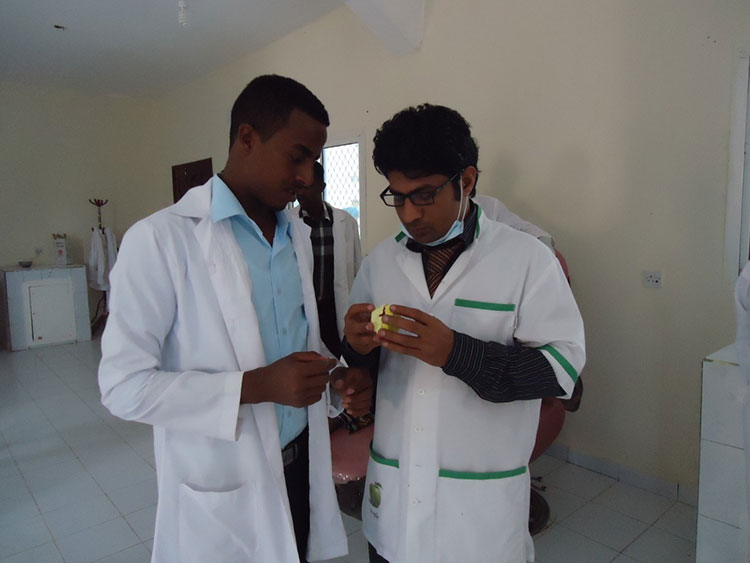
Clarify students concepts by making them go through the fabrication procedures practically thus efficiently turns students’ hypothesis into theories.
Teaches dental equipments and instruments and their use and when to use.
Teaches how to construct artificial teeth like partial dentures and complete Dentures.
Equip with the skills necessary for their practice in dental services.
Provides combination of nurturing support and challenges to the students to reach their maximum potential.
Instill working spirit among students and improves their co-ordination with others as well as the community being served.
Facilities of the ACHS - Maternal skill lab
Amoud College of health Sciences has a large multipurpose skill lab and one with specific obstetric skill equipment. The multipurpose skill lab is used for regular skill practices and for taking regular end term and final OSCE for nursing medical students.
The obstetrical skill lab is equipped with the latest obstetrical models and is used by midwifery students mainly, medical students and nursing students. The models include simulated obstetric models with which students can practice normal deliveries, third stage of labor, models for repairing episiotomies; simulated pregnant doll in which an abdominal examination can be carried on well, other models include IV arms, infant resuscitation models, and female catheterization models.
Furthermore, there are computers in which the latest video procedures of general nursing skills and midwifery skill are saved and students watch these procedures prior to practice.
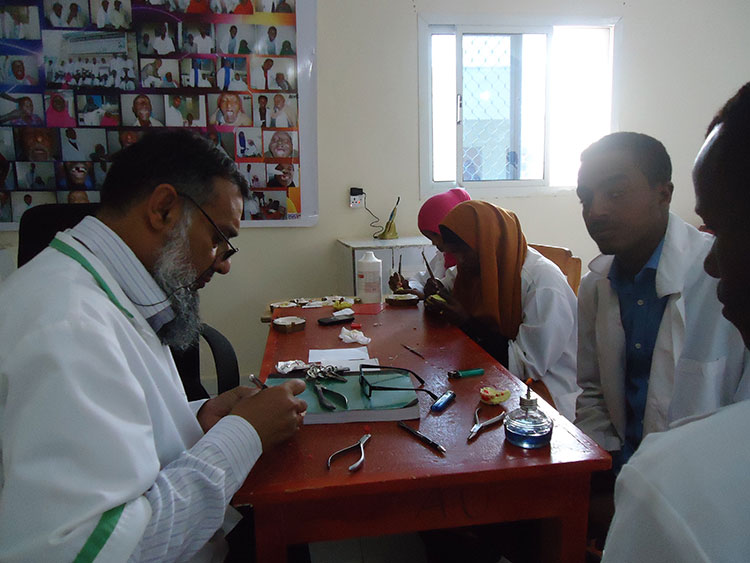
Facilities of the ACHS - Educational Development Center
To generate competent and appropriately trained health professionals, ensure a level of education based on international standards, optimize patient care and advance the health status of the people educational development center whose mission is to provide more relevant and accountable life-long health professional educational programmes that can lead the health promotion in the country. The center works in training the teaching staff of the training institutions on curriculum designing, assessment and evaluation of the educational programmes with the willingness to pursue their own learning after graduation.
 English
English

